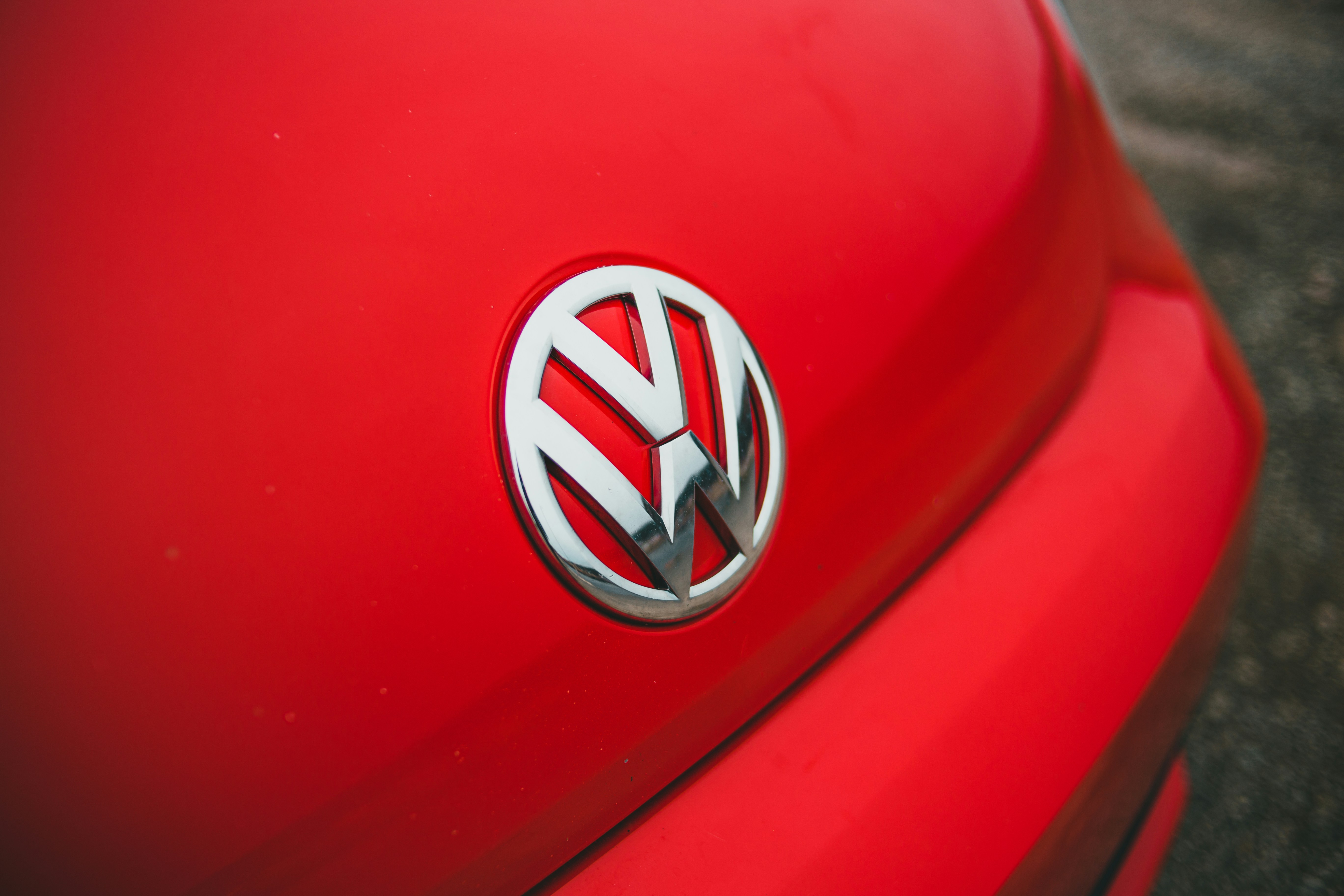The best 3D pens: model and design in 3D
Create three-dimensional art in an easy and intuitive way, with the best 3D pens for adults and children.
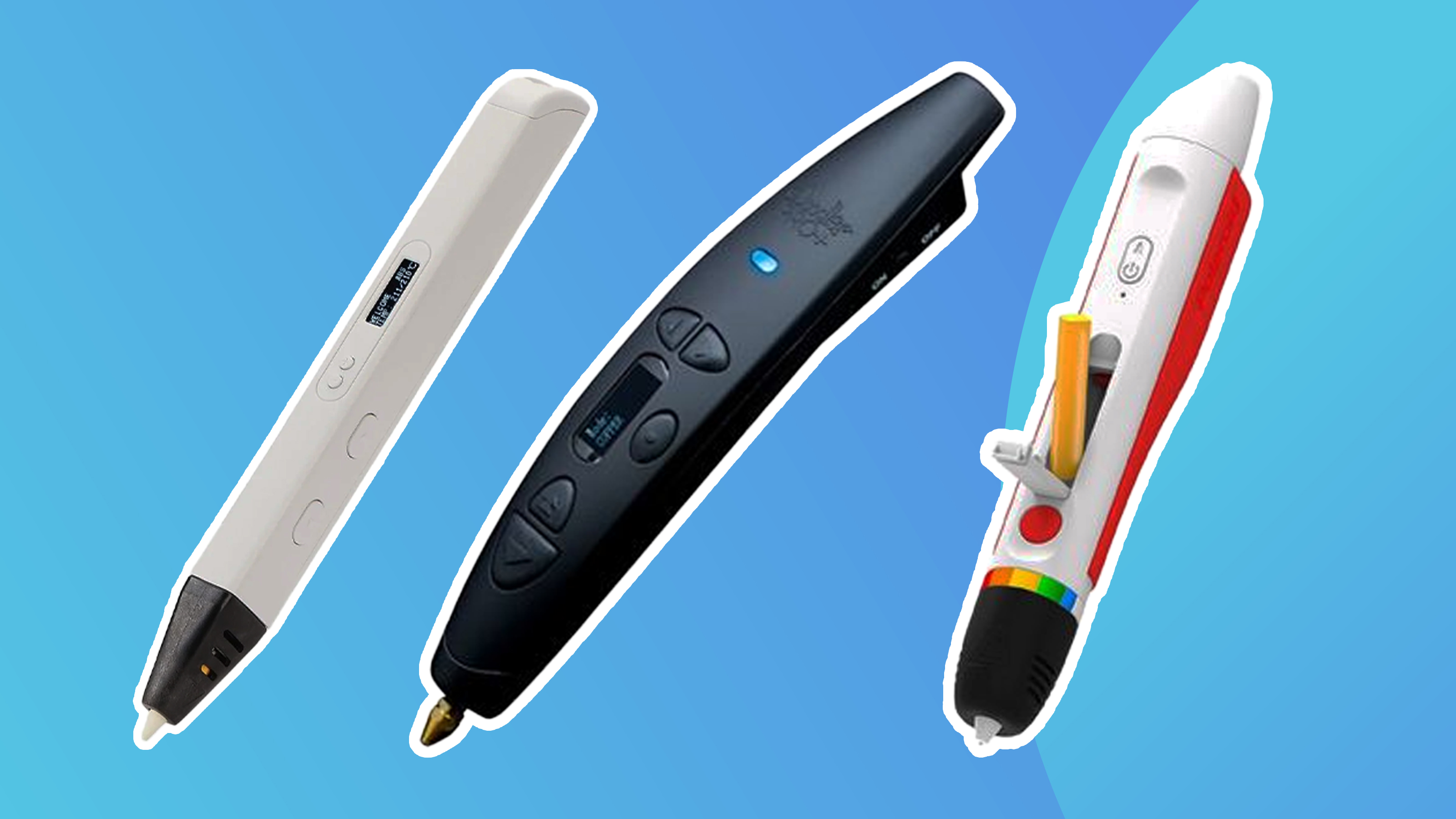
The best 3D pens have the power to take your creations from 2D sketches on paper to fully realised 3D sculptures. They're designed to be safe tools used by artists both old and young, and are super fun once you get to grips with them.
I used a handful of 3D pens before I got my mighty 3D printer (including a Polaroid 3D pen which caught flames and has since been discontinued), and I think 3D pens in general are excellent companions for patching up gaps in your existing printed models, or to add artistic hand-crafted elements to your designs.
For beginners, I recommend the MYNT3D Pro 3D Printing Pen as the best 3D pen overall when considering price, design and functionality. There are others on the market of course, but this all depends on your skill level. 3D pens are a great no-stress medium, but if you want to go further with analogue design, see our roundup of the best Cricut machines for crafty projects as well as the best laser cutters.
The quick list
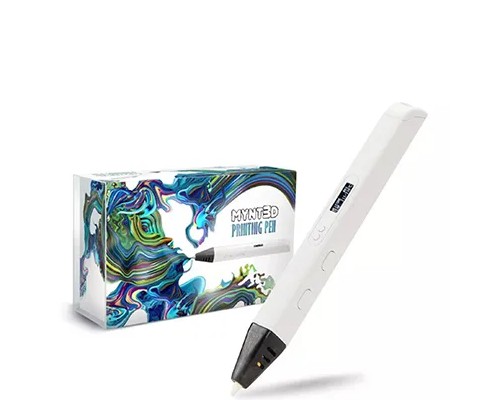
The super-flexible device is our pick as the best 3D pen overall. It's lightweight and ergonomic, with a comfy grip making it easy to hold, and it enables you to adjust the filament's speed and flow for optimal control of the process.
Read more
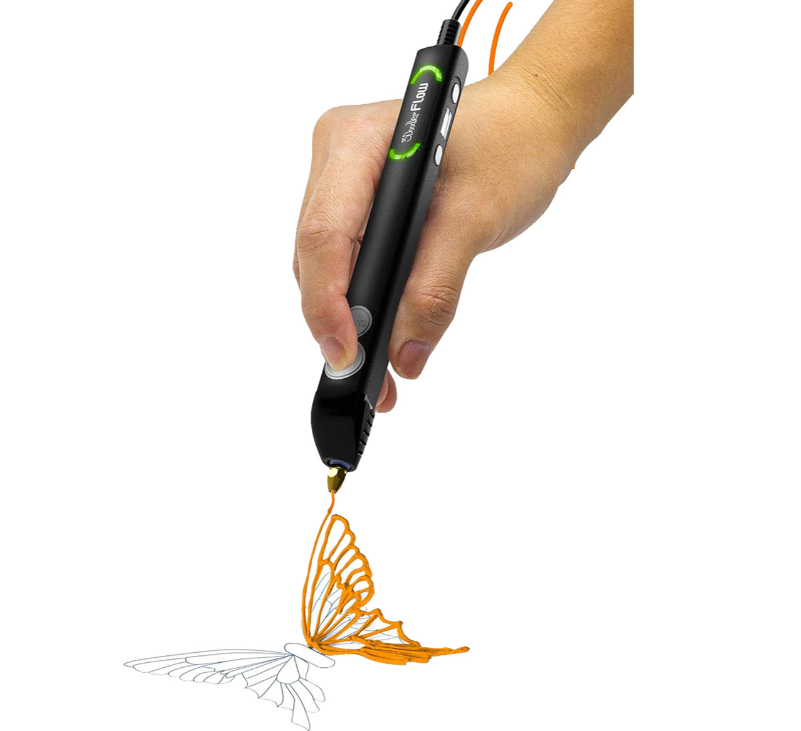
Here's our top pick for beginners. This 3D pen has a beautifully ergonomic design and is super easy to use, even for first-timers.
It has great support for newcomers, including online resources and it comes with a handy guidebook too.
Read more
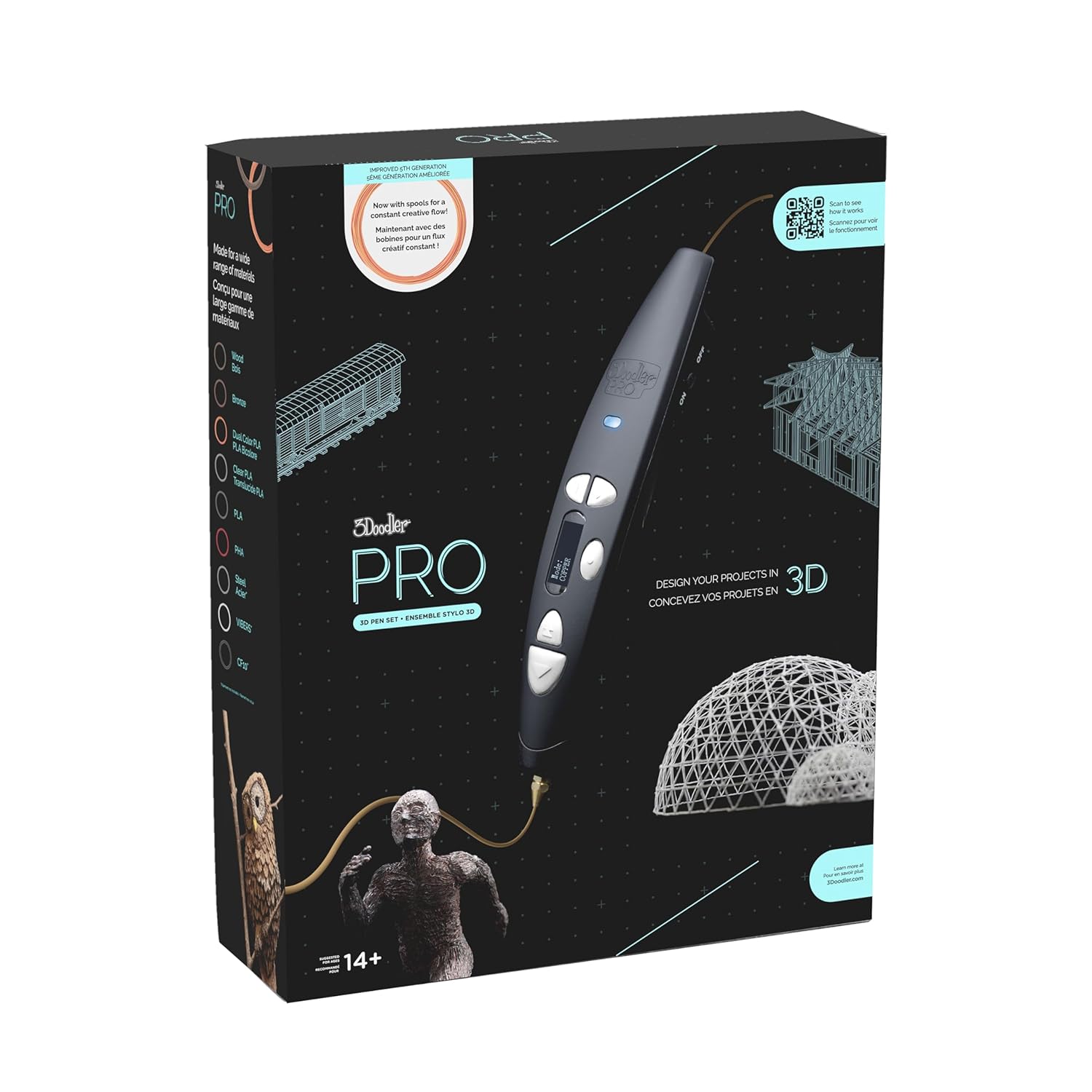
As the name suggests, this is a top (but pricey) choice for pros. This stylish and feature-packed pen can not only draw with 1.75mm ABS and PLA materials, but is also compatible with metal, wood, copper, and steel materials.
Read more
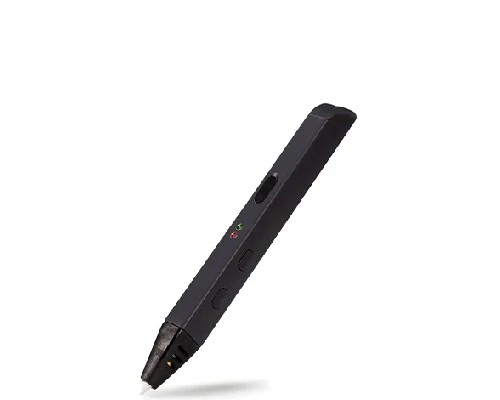
Cheaper than number 1 on this list, this 3D pen has the same gearbox and replaceable nozzle design, but without an OLED display or temperature controls. If you don't need these, that makes it excellent value overall.
Read more
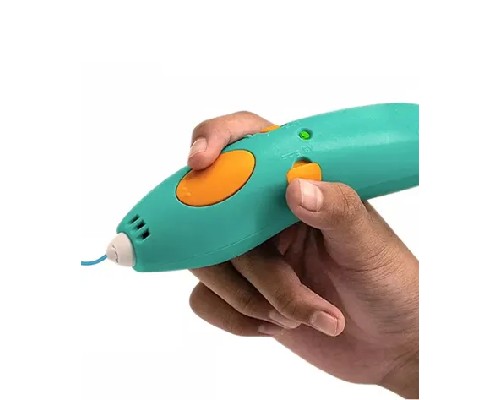
Designed for children aged 6+, this 3D pen features no hot parts, and the controls are kept to a minimum, making it easy to use. We think this is a great beginner pen, not only for kids but adults new to 3D pens too.
Read more

SUNLU is one of the top manufacturers of 3D printing materials, and the company also has its own intelligent 3D pen perfect for beginners and pros. It offers digital 8-speed regulation for accurate prints, and a convenient LCD screen.
Read more
The best 3D pens in full
Best 3D pen overall
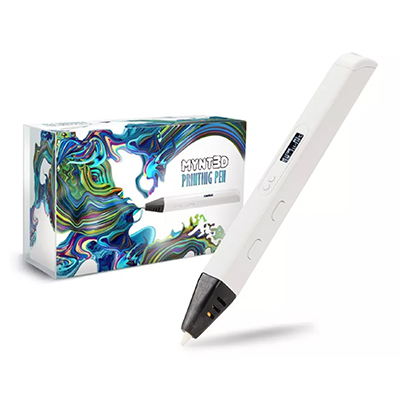
01. MYNT3D Pro 3D Printing Pen
Specifications
Reasons to buy
Reasons to avoid
Lightweight and ergonomic, the MYNT3D Pro is easy to hold and use. The modular nozzle design is easy to replace, so mistakes won't put it out of action. And experienced hands will appreciate its sophisticated features. All this makes it, in my eyes, the best 3D pen on sale today.
You can adjust the speed and flow of the plastic filament for finer control. You can also make fine tweaks to its temperature, in one-degree increments. And there's even a OLED display to monitor this, too. Plus it's super-flexible. Unlike many other 3D pens, the MYNT3D Pro supports a range of filament types: not just ABS and PLA, but according to the makers MYNT3D, any thermoplastic. "If it is 1.75mm and melts between 140-230° C, then it will work in the MYNT3D Pen", it claims. That could mean, for example, filaments infused with wood or bronze.
The pen is USB powered, so you can do some 3D drawing while you're away from a wall socket, by hooking it up to a plug adapter, laptop or one of the best power banks, as long as they have at least 2A output. The only downside is that it's quite expensive, and probably overkill for beginners and kids, but it does represent the best overall 3D pen by features and price.
Best 3D pen for beginners
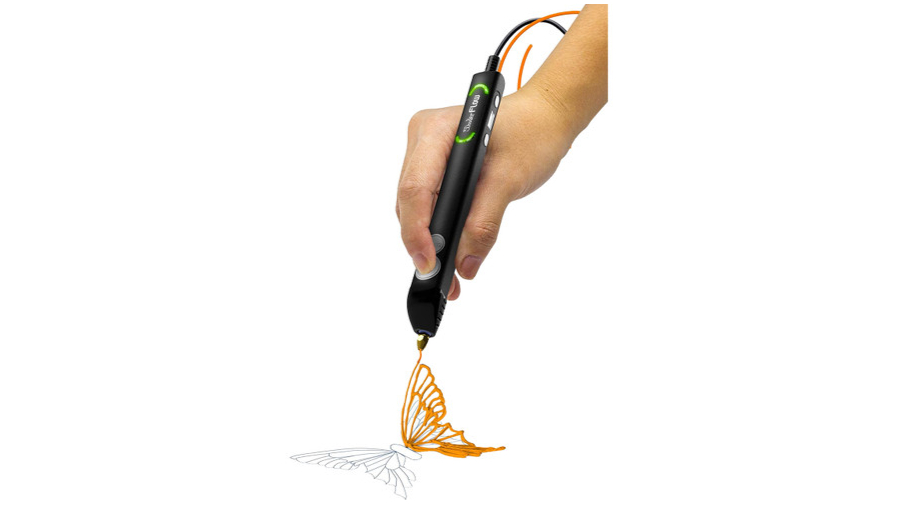
Specifications
Reasons to buy
Reasons to avoid
Never used a 3D pen before? Then we recommend the 3Doodler Flow. It has a beautifully ergonomic design that's easy to use, even for first-timers. More experienced hands will enjoy using this too, with its integrated LCD screen, plus dual speed and temperature controls giving you a nice degree of control.
This pen can work with a wide variety of 1.75mm plastic filaments and supports PLA, ABS and wood. You get eight different colour filaments included with this package, as well as a comprehensive guidebook. We've not had hands-on with this model, but it's the next generation of the 3Doodler Create+, which we praised for coming with everything you need to get started; it's much the same case with the 3Doodler Flow.
The wealth of materials and guides included with the 3Doodle Flow make this great for getting started if you've never used one of these crafty tools before. Once you get started you can upgrade to the 3Doodler PRO+ below, which takes the same brand's tech and steps it up a level.
Best pro 3D pen
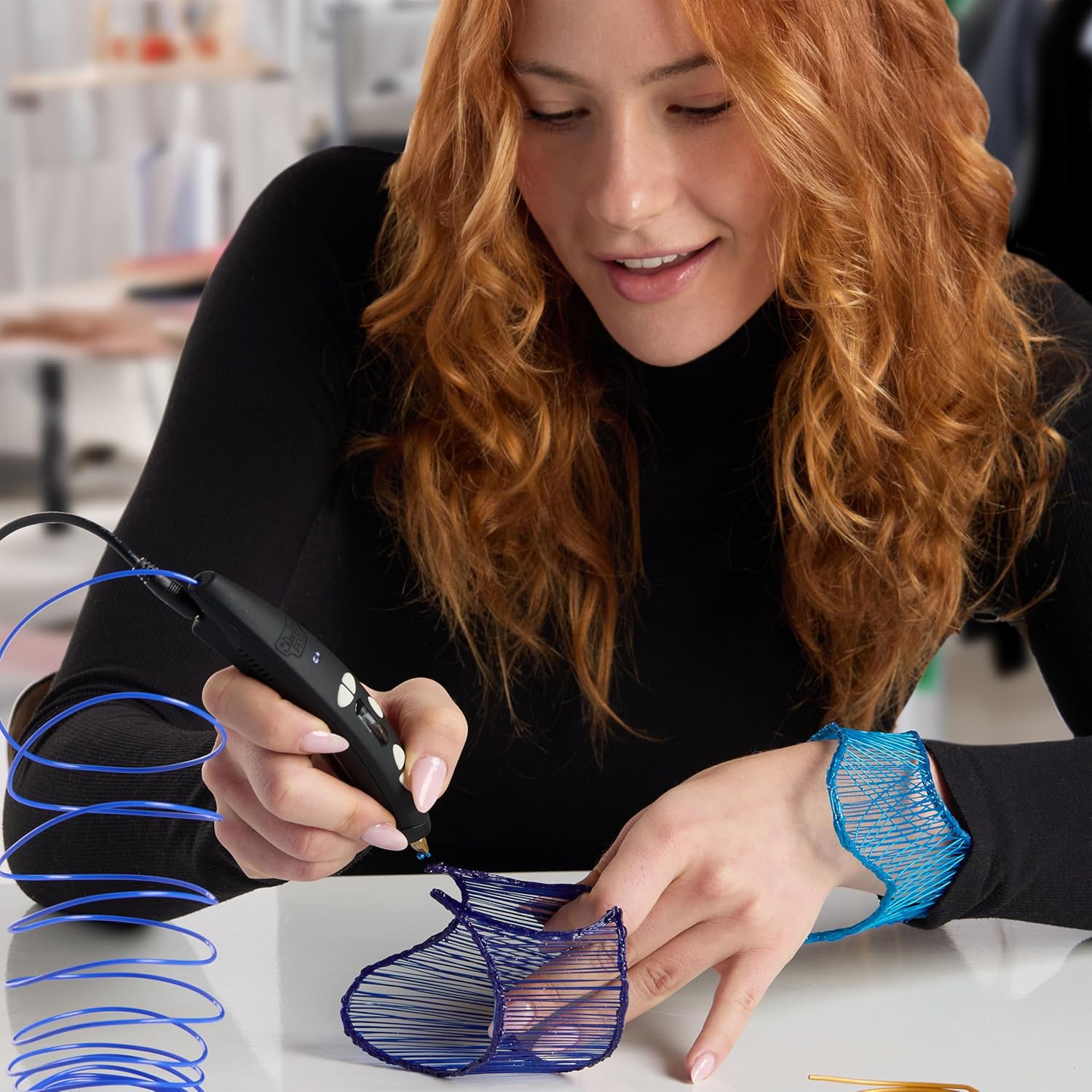
03. 3Doodler PRO (2025)
Specifications
Reasons to buy
Reasons to avoid
The 3Doodler PRO is a very popular 3D pen aimed at artists and professional crafters, and it has seemingly been given a new 2025 refresh. It's engineered as an industrial 3D pen, and can easily be used as a design and prototyping tool thanks to its enhanced precision and control features with an ergonomic button.
Some new features of this 3D pen from 3Doodler include a variable dial, upgraded display, and the fact that it can print with filament types that other pens on this list simply can't compete with, including wood, steel, and copper materials. It's also compatible with full-sized 1.75mm filament spools, as well as 3Doodler Flow mini-spools, making it a great companion for creatives who already own 3D printers.
If you don't need a large printing machine in your home office, then a 3D pen is a great space-saving alternative for creative professionals. If you're an artist or work in architecture, engineering and design, the 3Doodler PRO+ would be a good addition to your studio. It's a step up from other 3D pens so takes a little longer to grasp and get used to, but the results are fantastic.
The pen itself is beautifully finished in carbon fibre with an LCD display to monitor your settings. Ideally, it would be number 1 on this guide, but it sits at a pretty premium price point of $199 which is most definitely overkill for most people looking to spend $50. Its intended audience, though, will love it.
Best value 3D pen
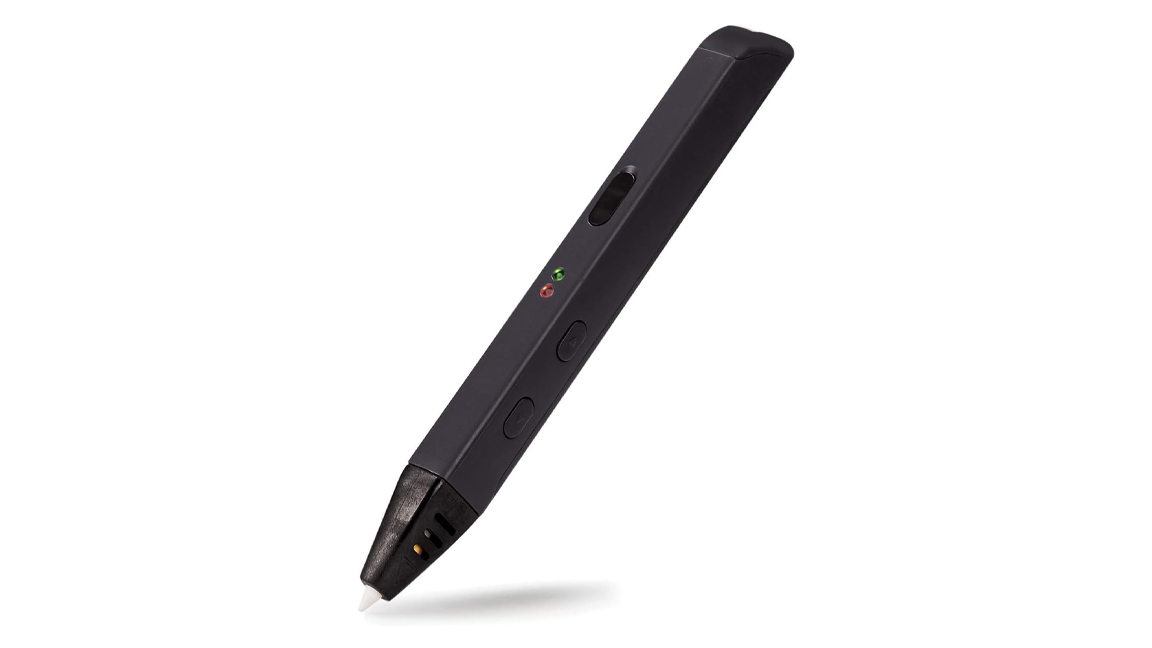
04. MYNT3D Super 3D Pen
Specifications
Reasons to buy
Reasons to avoid
Watching the pennies? Then check out the MYNT3D Super 3D Pen, which represents excellent value. It's similar to the Pro model (No.1 on my list), with the same gearbox and replaceable nozzle design. And yet at time of press, it was a lot cheaper.
There's a reason for that, of course. Here, you don't get the OLED display, or the temperature adjustment feature. Instead, a temperature adjustment screw lets you switch between the correct temperatures for ABS and PLA, but you're limited to those two materials.
However, it's still a great 3D pen and represents excellent value, which is easy to use in practice. Plus you get a stylus, three colours of ABS plastic and a 100-240V AC 50 / 60Hz adapter in the box. So overall, this 3D pen is excellent value.
Best 3D pen for kids
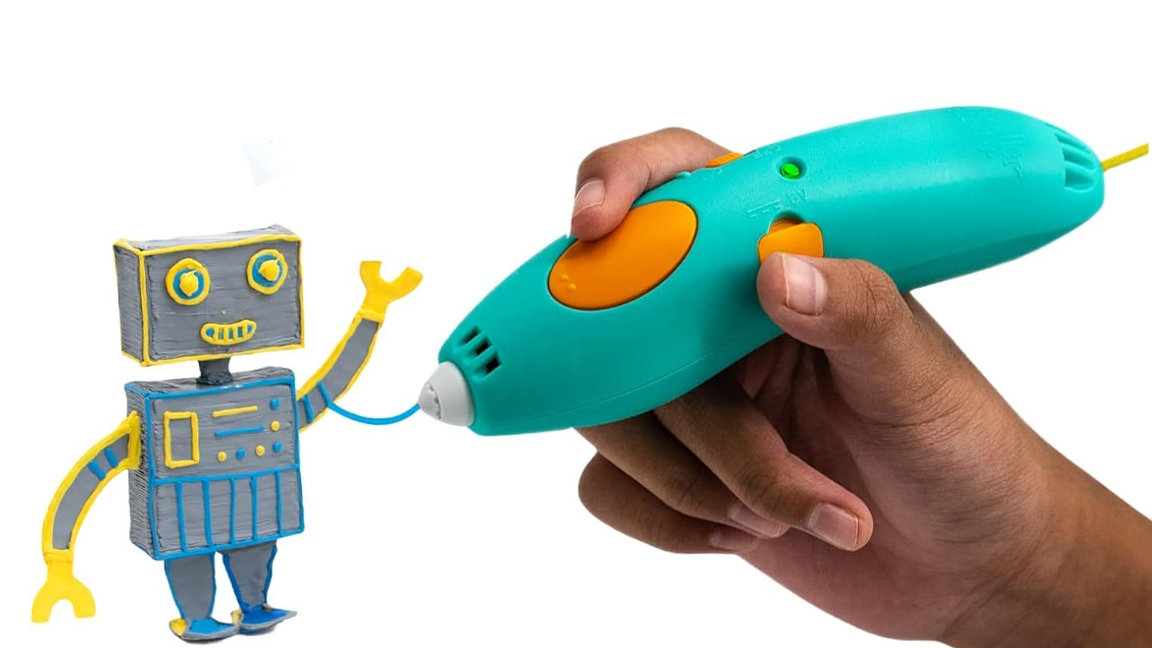
05. 3Doodler Start+ Essentials
Specifications
Reasons to buy
Reasons to avoid
The 3Doodler Essentials Start+ is my clear choice as the best 3D pen for children. Adhering to strict safety standards, it's designed with no hot parts, which means the pen nozzle and plastic can be touched without risk of burning. That makes it a safe choice for kids aged six and upwards.
It's also easy for kids to use, as the controls have been kept purposely simple. As with all 3Doodler pens, you can only use the company's own range of filaments, but you do get 72 strands to get you going, in eight colours (this is more than you used to get a year or so ago). Each strand offers 60 inches' worth of 3D printing, so that will get you pretty far before you need to buy more.
3Doodler has a good reputation in the 3D pen market, and this one has been designed for kids, and the brand has a good supply of fun filaments themed around 'fire and ice', 'stars and stripes' and more; so a lot of fun to be had.
Best 3D pen for patching up repairs
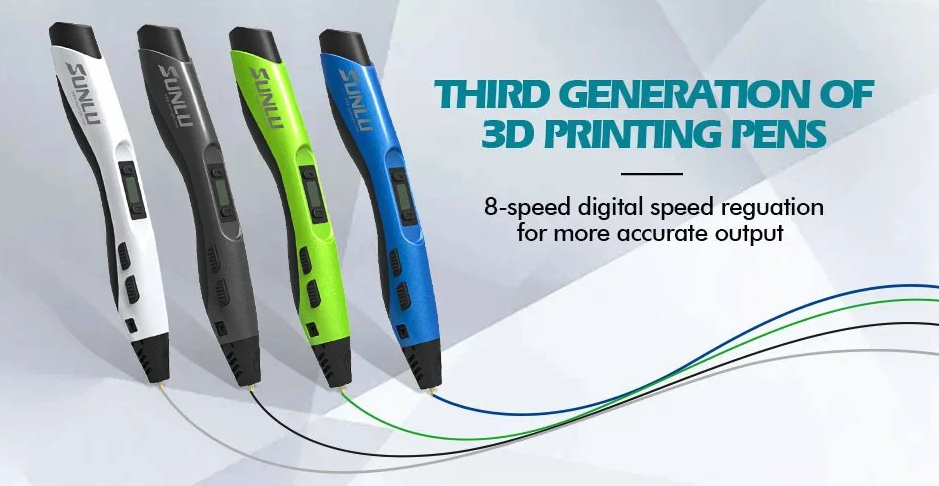
06. SUNLU SL-300 3D pen
Specifications
Reasons to buy
Reasons to avoid
If you're into 3D printing then chances are you're already familiar with SUNLU. This manufacturer of 3D printing materials and accessories is one of the most reputable and trusted on the market, so you're in good hands for quality products.
I've never used this specific 3D pen, but from some research, it sounds like an excellent choice for those wanting a reliable 3D pen at a reasonable price. At the time of writing, the SUNLU SL-300 3D pen is on sale for only $35.99 directly from SUNLUor you can get it a fraction cheaper from retail sites like AliExpress.
As for features, this pen has an impressive 8 levels of digital speed control for more accurate cooling, and also offers a unique patented nozzle boasting low temperatures and an improved safety index. It can also be connected to an external power supply if you need to charge it, which is handy for using it on the go, and has automatic unloading and feeding for easy material swaps.
How to choose the best 3D pen
The first thing to consider when buying a 3D pen is the price. Most 3D pens come in below $50 / £50, with good entry-level 3D pens costing around $45 / £40. Some pro-grade 3D pens like the 3Doodler PRO+ (number 3 on our list), are designed for complex art or Archviz, and can go as high as $200 / £200.
It's worth considering what you need, as a 3D pen around $50 / £50 will be perfect and good enough quality for most projects. (The 3Doodler PRO+ has advanced features like a powerful, adjustable fan and can use wood and metal materials that not everyone needs.)
Beyond that, here are a number of other factors to take into account:
- Comfort I've selected 3D pens in my list that have a modern ergonomic design, with the heat nozzle protected from the handle. Also consider the size and weight of the 3D pen, I've included these measurements in my reviews above for each entry.
- Constant plastic flow To make the best models you need a solid, steady plastic extrusion flow which comes from consistent heating.
- Controls The 3D pens on my list all offer a degree of control over the flow of plastic, and the more you pay generally the better the control options. Simple 3D pens will have a Start / Stop but the better ones on my list will enable real time temperature changes as well, ensuring more detail in your models.
- Reliability Good 3D pens these days are made to be easily cleaned, some on my list come with detachable nozzles, for example. This is something to look for, as an easy-clean pen will last you longer and filament lines will be more consistent.
- Replaceable nozzles Some of the best 3D pens offer replaceable, interchangable nozzles; not only for cleaning but for adjusting the size of the filament to switch from broad 'filler' lines to build a model to thinner detail lines.
- Wide mix of filaments Ideally you want a 3D pen that can work with any filament on the market regardless of brand, but some, particularly those aimed at kids for safety, will require you to use a brand's particular filament. Most 3D pens on my list can use any filament, but one or two are locked into a brand's preferred type.
- Widely compatible filament: Most 3D pens are compatible with lots of different brands of filament, but some require uniquely designed plastic that has special features, or locks you into buying from the same company. A 3D pen that can work with a range of materials and brands is better.
How we test the best 3D pens
Where possible I like to get hands-on and test a 3D pen myself. I've used our own reviews where possible, as well as referencing reviews from 3D World magazine; a title with over 20 years experience in all things 3D. If we've not reviewed a particular model because it's new or hard to source I've referenced experts online, on YouTube and from our sister tech websites, TechRadar and Tom's Guide.
FAQs
Do 3D pens really work?
Yes, 3D pens really work, if what you want to do is create a 3D model by hand. If you want to create a 3D model based on a pre-existing design, though, you need a 3D printer.
A 3D pen uses the same type of heating element to melt filament that you get in a 3D printer. But while the latter is controlled by software, a 3D pen you control entirely yourself, much like using a glue gun, so you can get truly expressive. Once the filament leaves the filter, it cools rapidly, and hardens into whatever shape you have formed it into.
What are the top uses for a 3D pen?
To draw simple shapes in three-dimensional space.
You can use a 3D pen to draw on any flat surface. But, as the name suggests, the real beauty of a 3D pen is that it allows you to draw in mid-air, using plastic filament, and create three-dimensional structures that then solidify. Alternatively, you can draw over an already existing object to enhance it or give it a texture greater than paper.
For quick fixes and repairing breaks
You can use melted filament from a 3D pen to patch up breaks in objects, as well as stitch together some of your already printed models. If you own a 3D printer, a 3D pen is a great companion tool for your projects.
To enhance or decorate
Ever wanted to spruce up your name badge for work? Or create some decorative flourish to add to your desk space? Using a 3D pen is not only a fun and practical creative outlet, but can also be calming and therapeutic when you need to take a break from work and draw something subtle.
Who are 3D pens for?
Anyone can use a 3D pen, but they're commonly used by hobbyists, artists, makers, fashion designers and home furnishing designers in creative projects. They're also used by engineers working in STEM, as well as DIYers to solve practical problems, by teachers in education, and by kids for fun projects.
Are 3D pens environmentally damaging?
If you want to avoid harming the environment with your 3D pen, then the plastic we recommend using is PLA, which is short for Poly Lactic Acid. A polyester derived from renewable biomass, typically from fermented plant starch such as corn, cassava, sugarcane or sugar beet pulp, this type of plastic is both biogradable and sustainable. To be specific, it typically takes around six to 12 months to break down, while for most plastics it takes hundreds of years.
The other type of plastic commonly used in 3D pens, ABS, is not so great for the environment. Short for Acrylonitrile butadiene styrene, ABS is petroleum-based and non-biodegradable. It's both bad for the environment and more toxic to humans than PLA.
Get the Creative Bloq Newsletter
Daily design news, reviews, how-tos and more, as picked by the editors.

Beth is Creative Bloq’s Ecommerce Writer and has the fun job of finding you the very best prices and deals on creative tech. Beth kicked off her journalistic career writing for Digital Camera World, and has since earned bylines on TechRadar too. With a Masters degree in Photography, Beth loves getting to tinker with new cameras, especially camera phones, as the resident Samsung fan on the team. Her background working as a tester for CeX let her play around with all kinds of weird and wonderful products, including robots, and she’s recently gotten into 3D printing too. Outside of CB, you’ll find her gaming on her PS5, photographing local shows under the alias Bethshootsbands, and making TikToks of her dog, Tilly.
